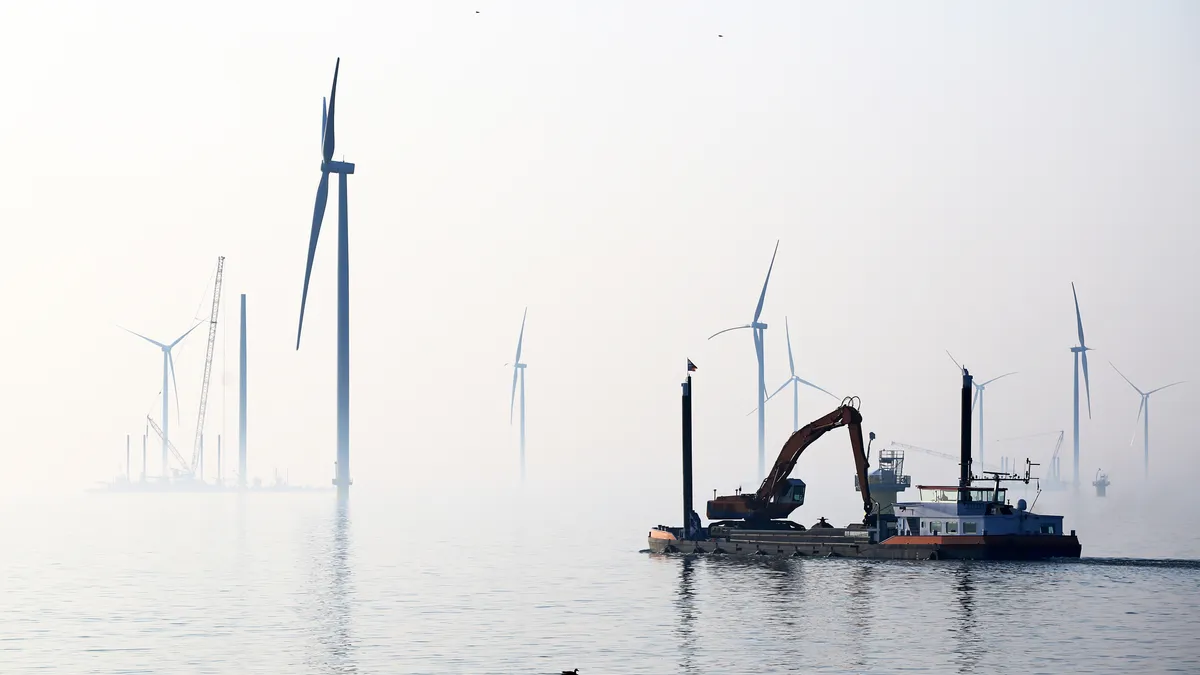Dive Brief:
- The estimated levelized cost of energy for U.S. fixed-bottom offshore wind projects fell 13% to $84/MWh on average last year from 2020, with prices expected to drop to around $60/MWh by the end of the decade, according to the Department of Energy.
- The U.S. offshore wind project pipeline grew 13.5% in the 12 months ending on May 31 to about 40,040 MW, with about half the planned capacity off the coasts of Massachusetts and New York, DOE said in its annual offshore wind market report, released Tuesday.
- “Offshore wind energy market indicators suggest it will be a substantial part of a comprehensive U.S. decarbonization strategy,” DOE researchers said in the report.
Dive Insight:
There are two operating offshore wind farms in the United States: Ørsted North America’s 30-MW Block Island wind farm and Dominion Energy’s 12-MW Coastal Virginia Offshore Wind pilot projects.
However, U.S. offshore wind deployment is expected to follow global growth trends, driven by state-level procurement targets and a national goal of 30 GW by 2030 set by the Biden administration, according to the report.
Consulting firms 4C Offshore and BloombergNEF expect U.S. offshore wind capacity to grow to 32 GW and 26 GW 2030, respectively, according to the report. Most of the capacity will be in East Coast states with offshore wind procurement goals.
There were 24 U.S. offshore wind power purchase agreements totaling nearly 17,600 MW at the end of May, according to the report.
“The actual size and speed of U.S. offshore wind buildout will depend on continued regulatory efficiency, the availability of installation vessels and port infrastructure, proactive onshore and offshore grid planning and upgrades, the successful commercialization of the 15-MW wind turbine platforms, and sustained market demand,” the DOE researchers said in the report.
The U.S. offshore wind sector supply chain saw “significant” growth this year and in 2021 with 10 major domestic manufacturing facilities announced at ports along the East Coast, according to the report.
However, the researchers cautioned there are challenges for the sector.
“Uncertain and fluctuating policy support, stakeholder concerns, constrained global supply chains, inflation, restrictive legislation for ocean development, land-based grid limitations, and geopolitical conflicts will pose challenges that could potentially impact the industry’s progress,” the researchers said.
In offshore wind action this month, California regulators approved a goal of adding 25 GW of offshore wind by 2045 and Virginia regulators approved Dominion’s 2.6-GW offshore project.















